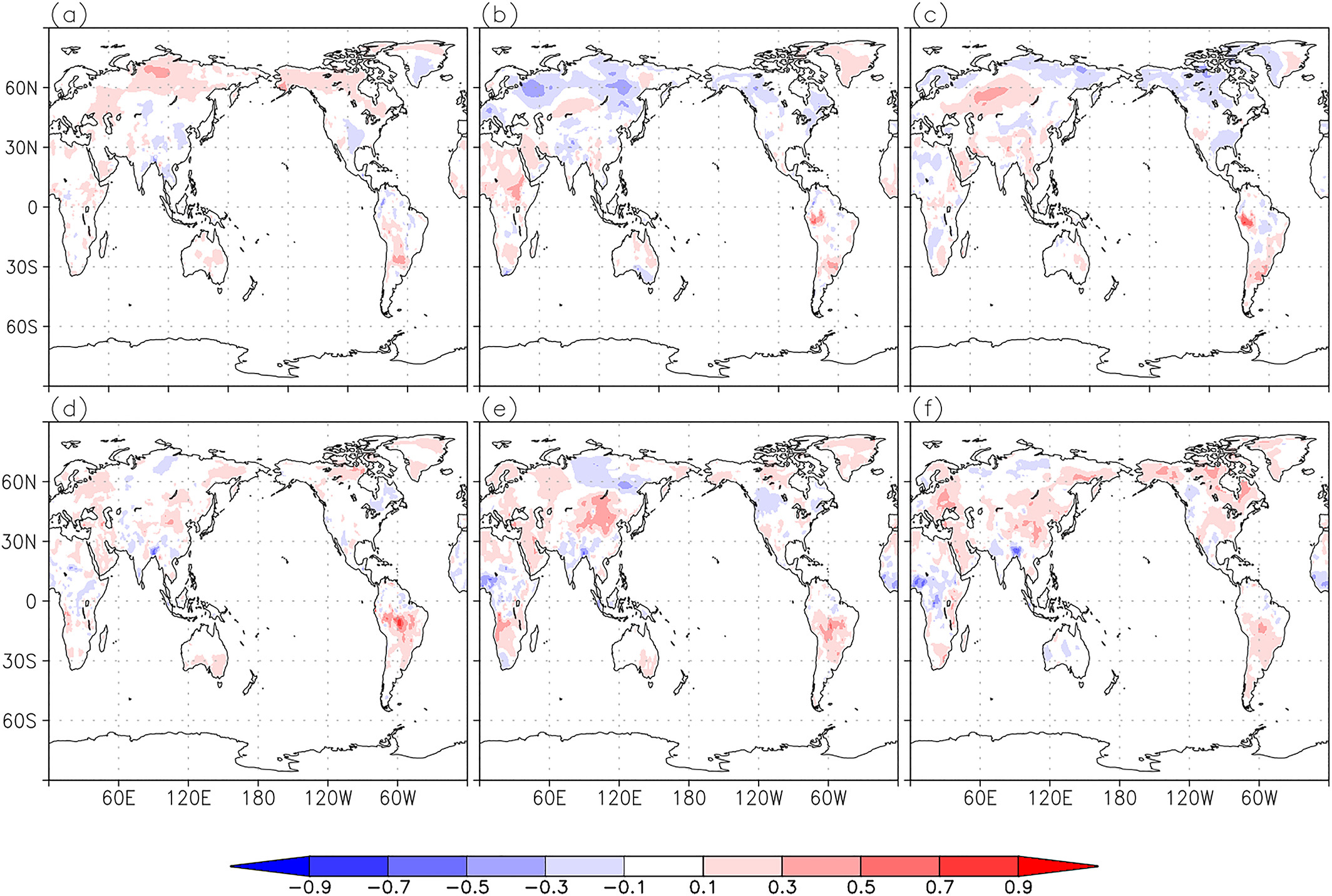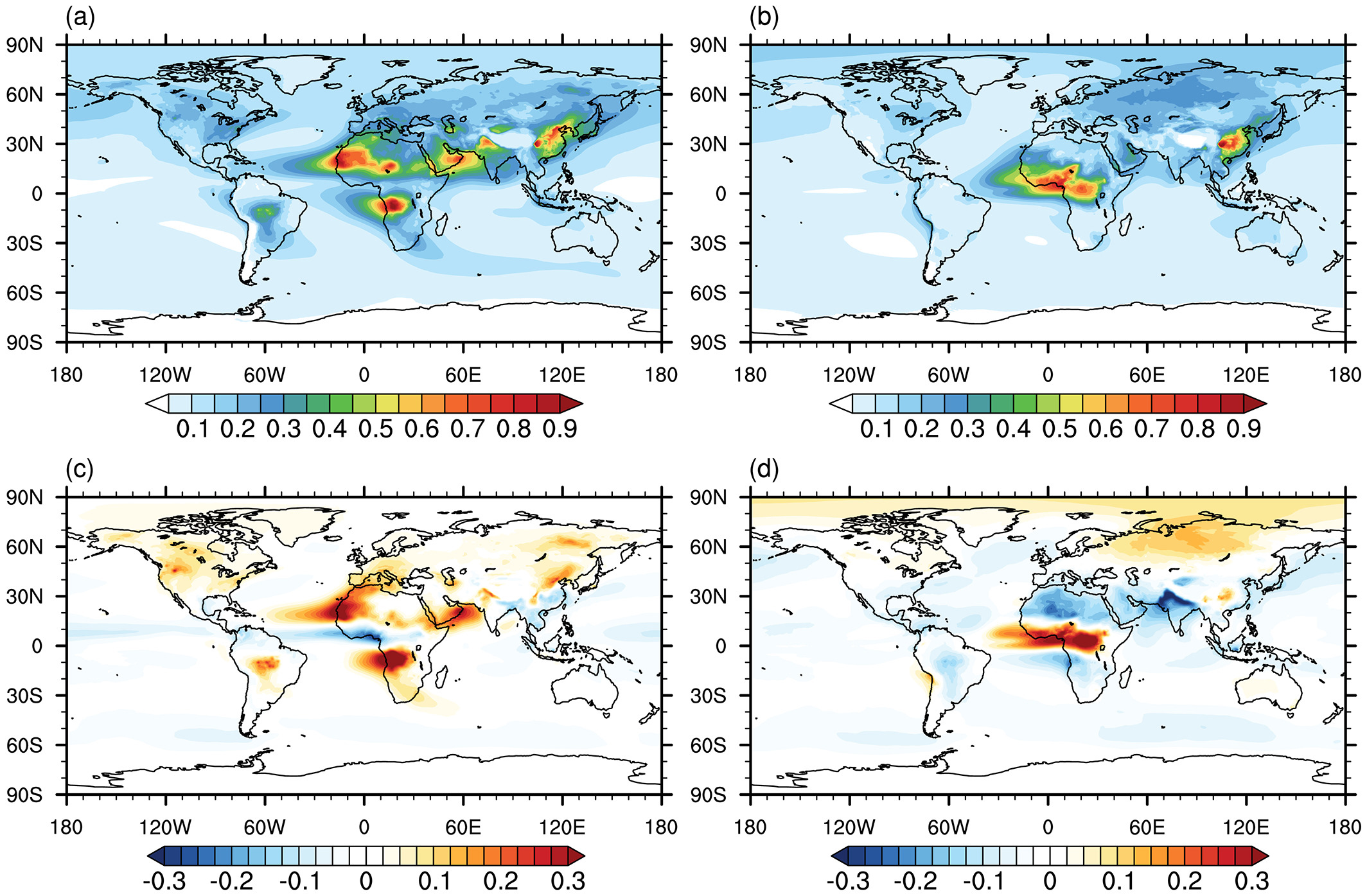Upgrade Markedly Improves Skill of NASA Seasonal Prediction System
NASA’s upgraded seasonal prediction system shows substantial improvement in performance, infrastructure, and forecast skill over its predecessor, per a broad set of experiments carried out at the NASA Center for Climate Simulation (NCCS).
In production mode, the Goddard Earth Observing System Subseasonal to Seasonal Prediction System, Version 2 (GEOS-S2S-2) runs once per month on the NCCS Discover supercomputer. Input and forecast output data are stored in Discover disk and NCCS mass storage. Continuing a practice begun with its GEOS-S2S-1 predecessor, GEOS-S2S-2 forecast products are then made available to the public and other government agencies by NASA’s Global Modeling and Assimilation Office (GMAO).

GEOS‐S2S‐2 notably improves forecasts of near‐surface temperatures. The top row shows the differences in seasonal mean temperatures between GEOS‐S2S‐2 and its predecessor GEOS‐S2S‐1 (GEOS‐S2S‐2 minus GEOS‐S2S‐1) for June-July-August at (a) 1‐month lead, (b) 4‐month lead, and (c) 7‐month lead. The bottom row shows the same values for December-January-February. Red shading marks areas of positive change and thus forecast skill improvements in GEOS-S2S-2 compared to GEOS-S2S-1; blue shading marks areas of negative change. Figure by Andrea Molod et al.
GEOS-S2S-2 includes three major elements:
- A Coupled Atmosphere-Ocean General Circulation Model.
- An Ocean Data Assimilation System.
- A weakly coupled Atmosphere-Ocean Data Assimilation System.
Compared to GEOS-S2S-1, the upgraded system uses newer versions of the atmosphere and ocean models, doubles atmosphere model resolution to 50 kilometers (matching ocean model resolution), adds the Goddard Chemistry Aerosol Radiation and Transport (GOCART) model, and implements a revamped ocean data assimilation system that employs a Local Ensemble Transform Kalman Filter (LeTKF) and assimilates along-track sea-level data for the first time.
Using Discover, GMAO scientists performed the experiments to test the upgraded system across a variety of forecasting applications:
| Forecast Type | Forecast Period | Number of Cores | Computing Time |
|---|---|---|---|
| Near-real-time seasonal forecasts | 9 months, 2017–present | 364 for each forecast, 11 ensemble members each month | 594 hours per ensemble |
| Retrospective seasonal forecasts | 9 months, for 36 years (1981–2016) | 364 for each forecast, 4 ensemble members each month | 93,312 hours total |
| Near-real-time subseasonal forecasts | 45 days, 2017–present | 108 for each forecast, 4 ensemble members per start date (every 5 days) | 24 hours per ensemble |
| Retrospective subseasonal forecasts | 45 days, for 17 years (1999–2015) | 108 for each forecast, 4 ensemble members per start date (every 5 days) | 29,784 hours total |
Among other gains, subseasonal experiments show Madden-Julian Oscillation (a short-term fluctuation in tropical weather) predictions to now be comparable to modeling community state of the art. Seasonal experiments demonstrate markedly improved eastern tropical Pacific forecasts (including El Niño and La Niña). GEOS-S2S-2 also substantially reduces errors in forecasting global surface temperatures.

GEOS-S2S-2 includes a new feature present in only a few seasonal prediction systems and no other near-real-time systems — the ability to predict aerosols. The top row shows spatial distribution of aerosol optical depth (AOD) at 550 nanometers in (a) July-August-September and (b) December-January-February, averaged for the period 2000 – 2015 from the GEOS-S2S-2 ensemble mean. The bottom row shows the same information as the top row, instead using GEOS-S2S-2 minus MERRA-2 reanalysis AOD.
Figure by Andrea Molod et al.
“NCCS computing power supports major advances, including making much better use of NASA observations,” said GMAO research scientist Andrea Molod, “and enables GEOS-S2S-2 to contribute higher skill to multi-model ensemble forecasts. We are in the last stages of testing our next system, GEOS-S2S-3, which will add a long-term ‘weakly coupled’ reanalysis and use higher ocean resolution of 25 kilometers. We like it even better.”
Related Links
- Molod, A., E. Hackert, Y. Vikhliaev, B. Zhao, D. Barahona, G. Vernieres, A. Borovikov, R.M. Kovach, J. Marshak, S. Schubert, Z. Li, Y.-K. Lim, L.C. Andrews, R. Cullather, R. Koster, D. Achuthavarier, J. Carton, L. Coy, J.L.M. Freire, K.M. Longo, K. Nakada, and S. Pawson, 2020: GEOS-S2S Version 2: The GMAO High Resolution Coupled Model and Assimilation System for Seasonal Prediction. J. Geophy. Res. - Atmos., 125, e2019JD031767, doi: 10.1029/2019JD031767.
- GEOS-S2S-2 Forecast System
- North American Multi-Model Ensemble
- Major Advance in MJO Prediction Skill in GMAO’s Near Real Time Seasonal Forecasts
Jarrett Cohen, NASA Goddard Space Flight Center


